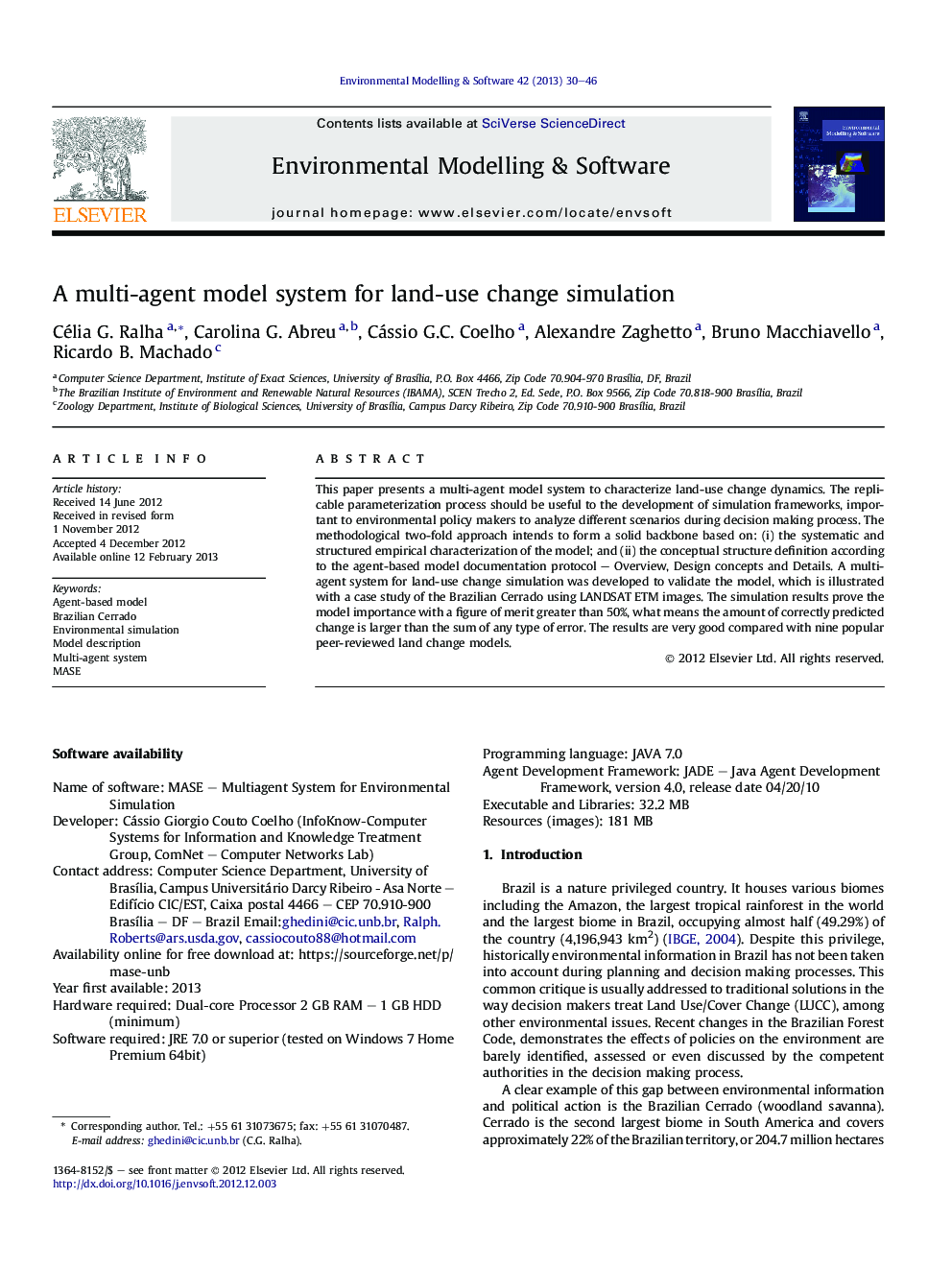| Article ID | Journal | Published Year | Pages | File Type |
|---|---|---|---|---|
| 569656 | Environmental Modelling & Software | 2013 | 17 Pages |
This paper presents a multi-agent model system to characterize land-use change dynamics. The replicable parameterization process should be useful to the development of simulation frameworks, important to environmental policy makers to analyze different scenarios during decision making process. The methodological two-fold approach intends to form a solid backbone based on: (i) the systematic and structured empirical characterization of the model; and (ii) the conceptual structure definition according to the agent-based model documentation protocol – Overview, Design concepts and Details. A multi-agent system for land-use change simulation was developed to validate the model, which is illustrated with a case study of the Brazilian Cerrado using LANDSAT ETM images. The simulation results prove the model importance with a figure of merit greater than 50%, what means the amount of correctly predicted change is larger than the sum of any type of error. The results are very good compared with nine popular peer-reviewed land change models.
► In this paper a multi-agent model system to characterize land-use change dynamics is presented. ► The model includes: empirically characterization (Smajgl et al., 2011) & conceptual structure (Grimm et al., 2006 – ODD protocol). ► MASE – a Multi-Agent System for Environmental land-use change simulation was developed to validate the model. ► MASE simulation results include: 3 possible 2-map & 3-map comparisons of Brazil's Federal District (Pontius et al., 2008). ► The results figure of merit is greater than 50%: amount of correctly predicted change is larger than the sum of any error.
